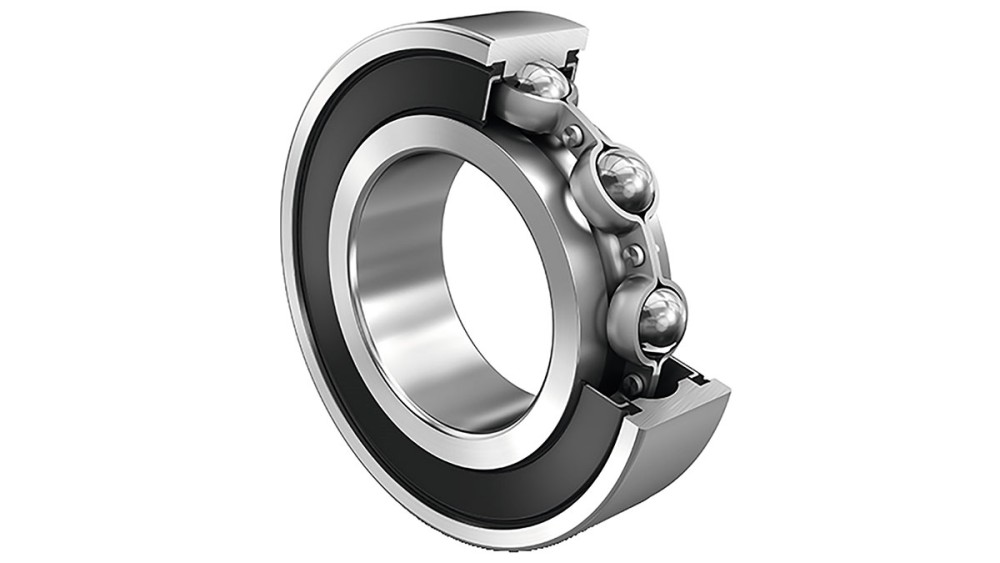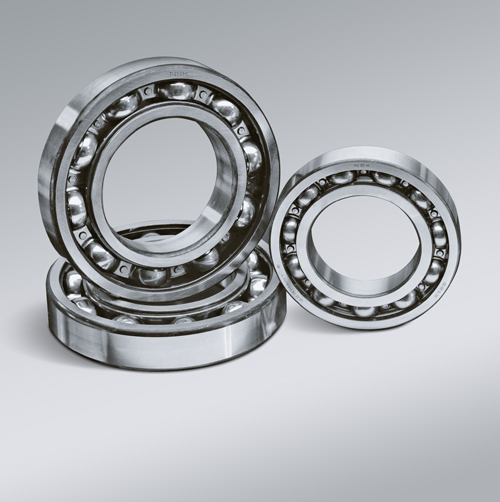Product Description
Product Description
Bearing 608
The Bearing 608 from HangZhou CZPT Bearing Co., Ltd. is a versatile component widely utilized in various machinery and industrial equipment, including motors, automobiles, agricultural machinery, wind turbines, and more. It is crucial to carefully consider the specific working conditions and load requirements when selecting a bearing 608 to ensure optimal performance and longevity of the equipment.
Key Features:
- High-speed capability, making it suitable for applications requiring high rotational speeds.
- Strong radial and axial load-carrying capacity to support heavy loads.
- Simple structure for easy installation and maintenance, reducing downtime.
- Excellent sealing performance to prevent dust and contaminants from entering the bearing, enhancing durability.
Detailed Photos
Company Profile
Certifications
Packaging & Shipping
/* January 22, 2571 19:08:37 */!function(){function s(e,r){var a,o={};try{e&&e.split(“,”).forEach(function(e,t){e&&(a=e.match(/(.*?):(.*)$/))&&1
| Meteria: | Bearing Steel |
|---|---|
| Sealing: | Zz 2RS Open |
| Precision: | P2 P4 P5 P6 P0 |
| Noise: | Z1 Z2 Z3 |
| Service: | OEM ODM |
| Size: | 8mm*22mm*7mm |
| Samples: |
US$ 0/Piece
1 Piece(Min.Order) | |
|---|
| Customization: |
Available
| Customized Request |
|---|
What are the signs of wear or damage in deep groove ball bearings, and when should they be replaced?
Deep groove ball bearings, like any mechanical component, can experience wear or damage over time. It is important to identify the signs of wear or damage in bearings and know when they should be replaced to prevent further issues. Here’s a detailed explanation of the signs of wear or damage in deep groove ball bearings and when they should be replaced:
- Abnormal Noise:
- Excessive Vibration:
- Increased Temperature:
- Irregular or Uneven Operation:
- Visible Wear or Damage:
- Lubrication Issues:
- Operating Conditions:
Unusual noises, such as grinding, clicking, or rumbling sounds, can indicate bearing wear or damage. These noises may occur during operation and can be an indication of insufficient lubrication, misalignment, or the presence of foreign particles. If abnormal noise is detected, it is recommended to inspect the bearings promptly and replace them if necessary.
Excessive vibration during operation can be a sign of bearing wear or damage. Vibrations may occur due to misalignment, imbalance, or the presence of faulty bearings. If the vibration levels are unusually high and cannot be attributed to other factors, the bearings should be inspected and replaced if needed.
Significantly increased operating temperature of the bearings can indicate wear or damage. Excessive friction caused by worn-out or misaligned bearings can generate excessive heat. If the temperature of the bearings exceeds the recommended operating limits, it is advisable to investigate the cause and replace the bearings as necessary.
Irregular or uneven operation of the equipment or machinery can be a symptom of bearing wear or damage. This may manifest as erratic or jerky movements, decreased performance, or decreased efficiency. If such irregularities are observed, the bearings should be inspected to determine if replacement is required.
Physical inspection of the bearings can reveal visible signs of wear or damage. These signs may include pitting, rust formation, scoring, or discoloration on the bearing surfaces. Excessive wear or damage that affects the smooth rolling motion or integrity of the bearings should prompt immediate replacement.
Problems with lubrication, such as inadequate or contaminated lubricant, can contribute to bearing wear or damage. Insufficient lubrication can lead to increased friction, heat generation, and accelerated wear. If lubrication-related issues persist despite proper maintenance, it may be necessary to replace the bearings.
The operating conditions of the equipment or machinery can also influence the lifespan of deep groove ball bearings. Factors such as heavy loads, high speeds, extreme temperatures, exposure to corrosive environments, or prolonged use can accelerate wear or damage. In such demanding conditions, bearings may need to be replaced more frequently to ensure reliable operation.
It is important to note that the timing of bearing replacement depends on various factors, including the severity of wear or damage, the criticality of the application, and the manufacturer’s recommendations. Regular inspection and maintenance practices, as well as monitoring of the aforementioned signs, can help determine the appropriate timing for bearing replacement. Consulting with bearing manufacturers or maintenance professionals can provide valuable guidance in assessing the condition of deep groove ball bearings and making informed decisions regarding replacement.
In summary, signs of wear or damage in deep groove ball bearings include abnormal noise, excessive vibration, increased temperature, irregular or uneven operation, visible wear or damage, lubrication issues, and demanding operating conditions. Prompt replacement of bearings exhibiting these signs is essential to prevent further damage, avoid equipment failure, and ensure the continued smooth and reliable operation of machinery or equipment.
How does proper lubrication impact the performance and longevity of deep groove ball bearings?
Proper lubrication plays a crucial role in determining the performance and longevity of deep groove ball bearings. Here’s a detailed explanation of how proper lubrication impacts these aspects:
- Reduced Friction and Wear:
- Heat Dissipation:
- Corrosion and Contamination Protection:
- Noise and Vibration Reduction:
- Effective Load Distribution:
- Preservation of Bearing Integrity:
Lubrication creates a thin film of lubricant between the rolling elements and the raceway surfaces of the deep groove ball bearing. This film of lubricant reduces friction and minimizes metal-to-metal contact, resulting in lower wear and extending the bearing’s lifespan. Proper lubrication ensures that the lubricant film remains intact, preventing excessive friction, heat generation, and premature wear of the bearing components.
Deep groove ball bearings can generate heat during operation due to the sliding and rolling contact between the balls and the raceways. Adequate lubrication helps in dissipating this heat by carrying it away from the contact zone. Proper lubrication prevents the bearing from overheating, which can lead to accelerated wear, loss of dimensional stability, and even bearing failure.
Lubrication provides a protective barrier against corrosion and contamination. The lubricant helps to seal the bearing against external elements such as moisture, dust, dirt, and other contaminants that can degrade the bearing surfaces and compromise its performance. By preventing corrosion and contamination, proper lubrication extends the bearing’s service life and ensures reliable operation in challenging environments.
Insufficient or improper lubrication can result in increased noise and vibration levels in deep groove ball bearings. The lubricant acts as a cushioning medium, absorbing shocks and reducing the transmission of vibrations. Proper lubrication minimizes the generation of noise and vibrations, resulting in smoother and quieter operation of the bearing.
Proper lubrication ensures effective load distribution within the deep groove ball bearing. The lubricant film helps distribute the applied loads evenly across the rolling elements and raceways, minimizing stress concentrations and preventing premature fatigue or failure of the bearing. This promotes the bearing’s load-carrying capacity and enhances its overall performance and reliability.
Adequate lubrication helps preserve the overall integrity of deep groove ball bearings. It reduces the risk of surface damage, pitting, and scoring, which can lead to accelerated wear and premature failure. Proper lubrication also prevents the formation of rust and corrosion, preserving the structural integrity of the bearing components and ensuring their long-term functionality.
In summary, proper lubrication of deep groove ball bearings is essential for reducing friction and wear, dissipating heat, protecting against corrosion and contamination, minimizing noise and vibrations, facilitating effective load distribution, and preserving the overall integrity of the bearing. By ensuring proper lubrication, the performance and longevity of deep groove ball bearings can be significantly enhanced, resulting in reliable operation and extended service life.
What challenges are associated with minimizing noise and vibration in deep groove ball bearings?
Minimizing noise and vibration in deep groove ball bearings can be challenging due to several factors that can contribute to these unwanted effects. While deep groove ball bearings are designed to provide smooth and quiet operation, certain challenges need to be addressed to achieve optimal noise and vibration levels. Here’s a detailed explanation of the challenges associated with minimizing noise and vibration in deep groove ball bearings:
- Internal Clearance and Preload:
- Manufacturing and Assembly Variations:
- Lubrication:
- Operating Conditions:
- Application-Specific Challenges:
The internal clearance and preload of deep groove ball bearings can significantly impact noise and vibration levels. Insufficient preload or excessive internal clearance can result in excessive ball movement, leading to increased vibration and noise generation during operation. On the other hand, excessive preload can cause additional bearing stress and potential noise issues. Achieving the proper balance between preload and internal clearance is crucial to minimize noise and vibration in deep groove ball bearings.
Manufacturing and assembly variations can introduce irregularities or imperfections in deep groove ball bearings, leading to increased noise and vibration. Variations in ball size, shape, or surface finish, as well as irregularities in raceway profiles or cage design, can contribute to uneven loading, increased friction, and vibration. Strict quality control measures and precision manufacturing techniques are essential to minimize these variations and ensure consistent performance and reduced noise levels across deep groove ball bearings.
Lubrication plays a critical role in minimizing noise and vibration in deep groove ball bearings. Insufficient or improper lubrication can result in increased friction, wear, and noise generation. Inadequate lubrication film thickness can also lead to metal-to-metal contact and increased vibration levels. Proper selection and application of suitable lubricants, taking into account factors such as speed, temperature, and load conditions, are essential to maintain optimal lubrication and mitigate noise and vibration issues.
The operating conditions in which deep groove ball bearings are used can pose challenges in minimizing noise and vibration. Factors such as high speeds, heavy loads, misalignment, or temperature variations can induce vibrations and increase noise levels. In some cases, external factors such as electrical or magnetic fields can also impact the performance of deep groove ball bearings. Understanding the specific operating conditions and selecting bearings with appropriate load and speed ratings, as well as implementing proper alignment and environmental controls, are crucial to minimizing noise and vibration.
Each application may have its unique challenges in minimizing noise and vibration in deep groove ball bearings. For example, in electric motors, the electromagnetic forces can introduce additional vibrations and noise. In such cases, careful design considerations, such as optimizing bearing selection, mounting techniques, and implementing vibration dampening measures, may be necessary to address these application-specific challenges.
In summary, minimizing noise and vibration in deep groove ball bearings requires addressing challenges related to internal clearance and preload, manufacturing and assembly variations, lubrication, operating conditions, and application-specific factors. By understanding these challenges and implementing appropriate measures such as precise manufacturing techniques, proper lubrication practices, suitable bearing selection, and application-specific considerations, it is possible to achieve reduced noise and vibration levels, resulting in smoother and quieter operation of deep groove ball bearings.
editor by CX 2024-04-19




